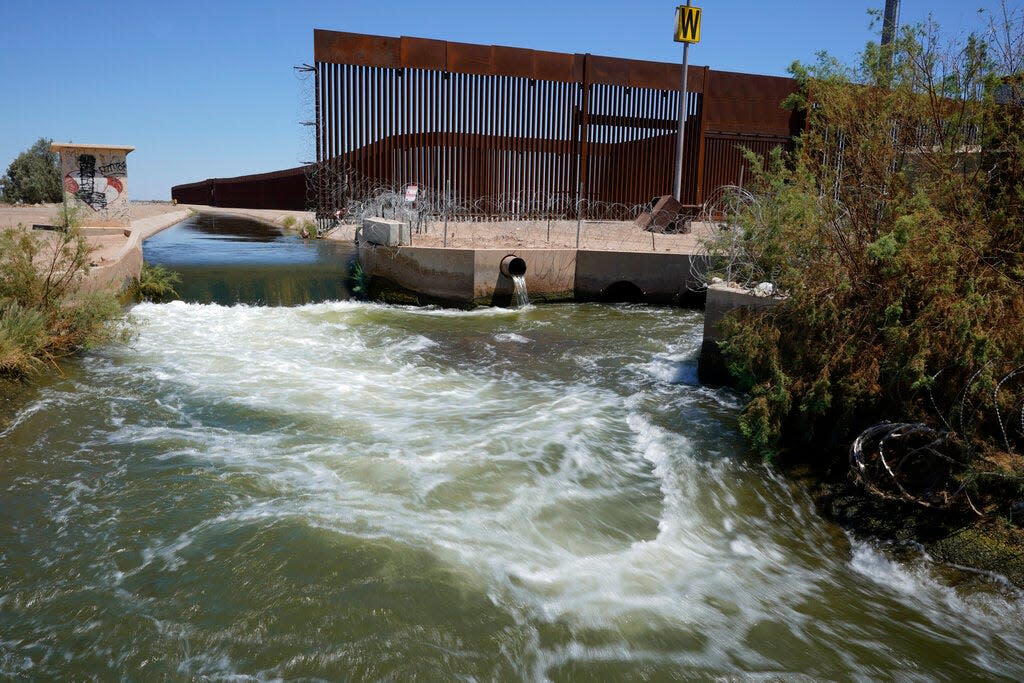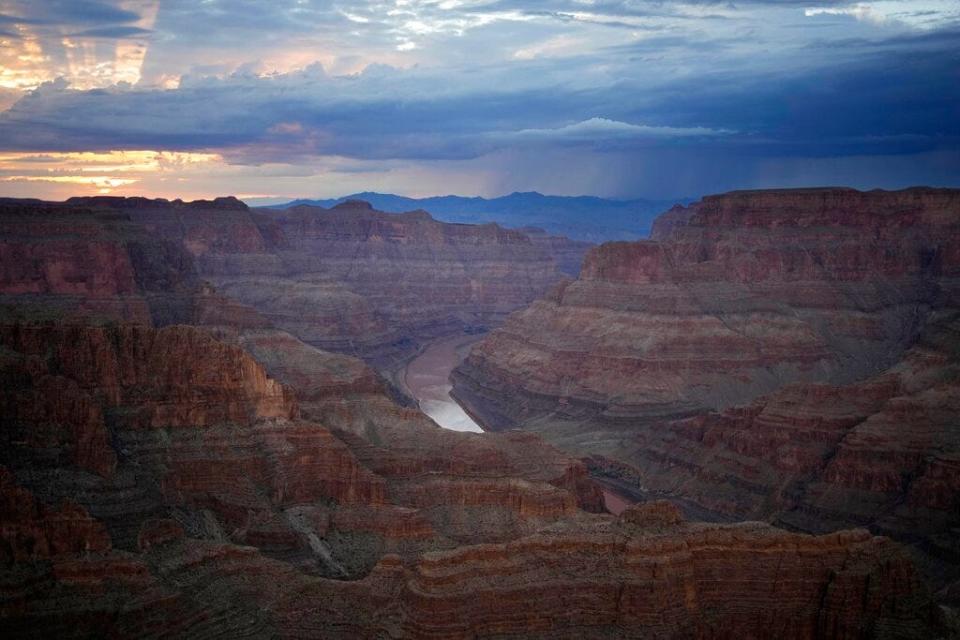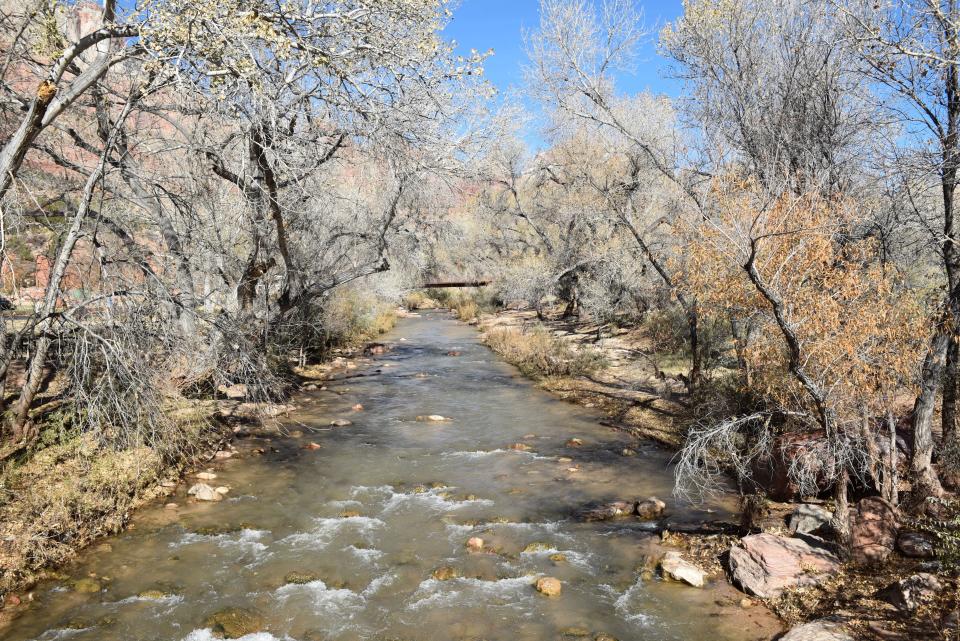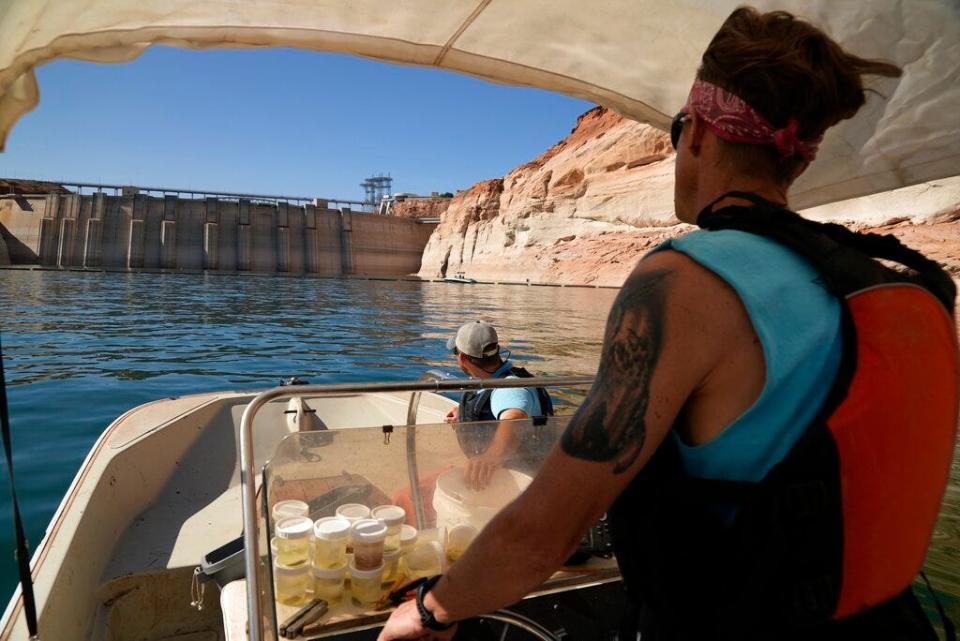Utah signs on to Colorado River proposal as lawmakers pump out new bills

Utah joined a group of six states on Monday in proposing a new model to dramatically cut water use in the Colorado River basin, moving forward without two key partners − California and Mexico − in the latest effort by western states to meet the challenges presented by the ongoing drought and a changing climate.
Then, just a few hours later, Utah's most influential legislators hosted a news conference to introduce what they called "Water Week" and unveil a series of bills they said would focus on conservation and finding sustainable solutions to the state's most glaring contradiction − Utah is the second-driest state in the U.S., yet also has one of the fastest-growing populations.
“We will fix our region’s water problems by investing in long-term solutions, not just applying band-aids,” Senate President Stuart Adams said.
Lawmakers outlined a list of water priorities that largely followed existing plans, such as paying residents to remove grass and improving the efficiency of farms, but would pump more money into the problem and encourage residents and businesses to cut back.

The emphasis would be on incentives instead of penalties, House Speaker Brad Wilson said, saying the state would continue its longstanding "carrots, not sticks" philosophy rather than charging more for water or punishing water wasters.
"People will continue to do the right thing for the right reasons," Wilson said, arguing that Utahns have already conserved nearly 10 billion gallons of water per year through voluntary measures.
Carrots, not sticks

"Water Week" would involve multiple bills addressing a wide range of issues related to water, injecting millions into conservation efforts like turf-removal programs and rebates for agricultural operations to improve their monitoring and efficiency. Funding would also be set aside to try and preserve the Great Salt Lake, which fell again to record lows in 2022.
As lawmakers file new bills, the plan is to ramp up efforts already started in last year's legislative general session, when the body passed more than a dozen bills and set aside more than $500 million on conservation programs and efficiency efforts.
In addition to turf rebates and help for farmers and ranchers, lawmakers are expected to consider paying farmers not to grow crops, stricter rules for water use at schools and other public facilities and a proposal to use sales tax revenues to fund programs set up to save the Great Salt Lake.
Adams and Wilson also said they plan to create a "Great Salt Lake Authority" to manage and coordinate efforts to improve conditions at the lake.
Much would depend on the language behind the bills and just how much lawmakers are willing to ask of residents and businesses.
One measure that has already been proposed, which would require golf courses to publish their annual water usage, was tabled in a committee meeting last week amid opposition from industry representatives.
Conservation first
Conservation plans aside, Utah still has hopes of dipping further into its Colorado River allocations.
In the midst of the worst drought in decades, with the population growing and resources dwindling, Washington County water managers have spent millions pursuing a controversial project that would pull more water from the river system. The Lake Powell Pipeline, which would pump water 140 miles from the reservoir to thirsty communities in and around St. George, has been on the state's wish list since the early 2000s.

The project has been held up for years in permitting processes, and federal approvals have been slow to come as the entire river basin has come under closer scrutiny, but state and local officials continue to pursue it.
In the meantime, they have been bigger advocates for conservation in recent years. At the water district's direction, area municipalities earlier this year instituted the state's most restrictive ordinances on new construction, banning "non-functional" grass, requiring new homes and businesses be built with water-efficient appliances, and placing limits on water-heavy properties like car washes and golf courses. And in December, the district started taking applications for a turf-removal program that would pay residents to remove their grass lawns.

Turf removal programs have proven successful in desert cities like Las Vegas, dropping per-capita use but have been slow to develop in Utah, with water managers often citing a lack of funding. In southwestern Utah, the hottest and driest corner of the state, the demand for such programs increased in recent years due to drought, declining reservoir storage and controversy surrounding new pipeline proposals.
Colorado River negotiations

The Legislature's efforts come just as Utah and the rest of the Colorado River basin states debate new models for replenishing Lake Mead and Lake Powell and better managing a river that supports some 40 million people across the Southwest.
The states missed a federally-imposed August deadline to propose a plan to save water, and the U.S. Bureau of Reclamation has threatened to impose cuts on its own if an agreement can't be reached.
Arizona, Nevada, New Mexico, Colorado, Utah and Wyoming sent a letter to the agency on Monday proposing deeper water cuts and new rules to consider water lost through evaporation and transportation, but neither California nor Mexico signed on, with officials in California saying they planned to submit their own proposal.
The seven member states have been struggling for years to adjust their agreements, falling back on a compact created in 1922 that divvies up the river water, allocating 7.5 million acre-feet (the amount of water that would cover an acre a foot deep) between the "upper basin" states of Colorado, New Mexico, Utah and Wyoming and 8.5 million acre-feet to Arizona, California and Nevada. Mexico was later guaranteed 1.5 million acre-feet.
But the river has rarely provided as much as 17.5 million acre-feet, especially in recent years as drought and climate change have dried the region. Since 2000, the river has only averaged 12 million acre-feet per year, and both Lake Mead and Lake Powell have dropped to historic lows.
The Bureau of Reclamation, an office within the Interior Department that manages the river system, has been tasked with finding a solution, but the states' cooperation has been in question. Many expect the issue could devolve into lawsuits and ultimately be settled in court.
This article originally appeared on St. George Spectrum & Daily News: Utah proposes 'Water Week' of bills as western states debate future

